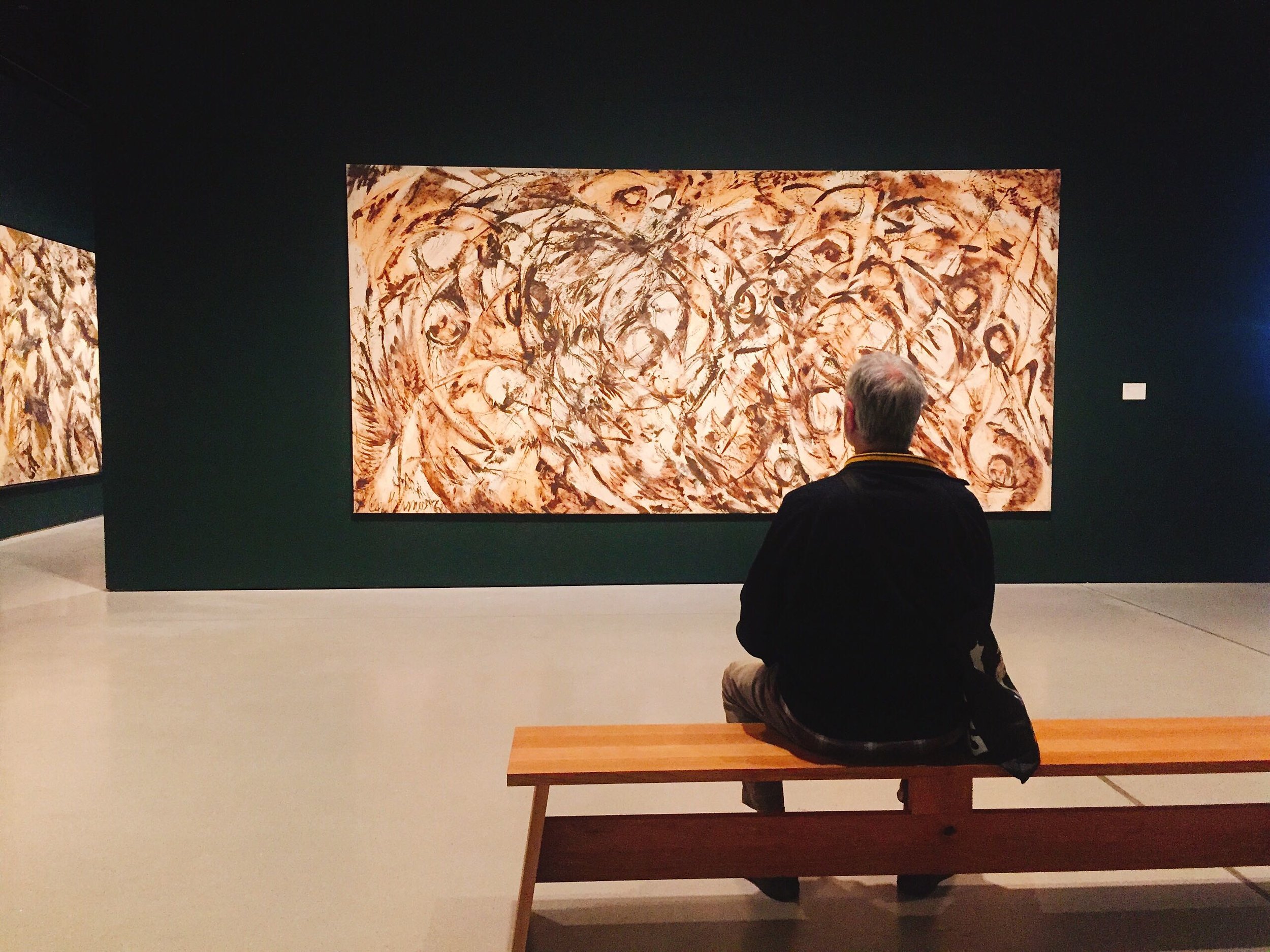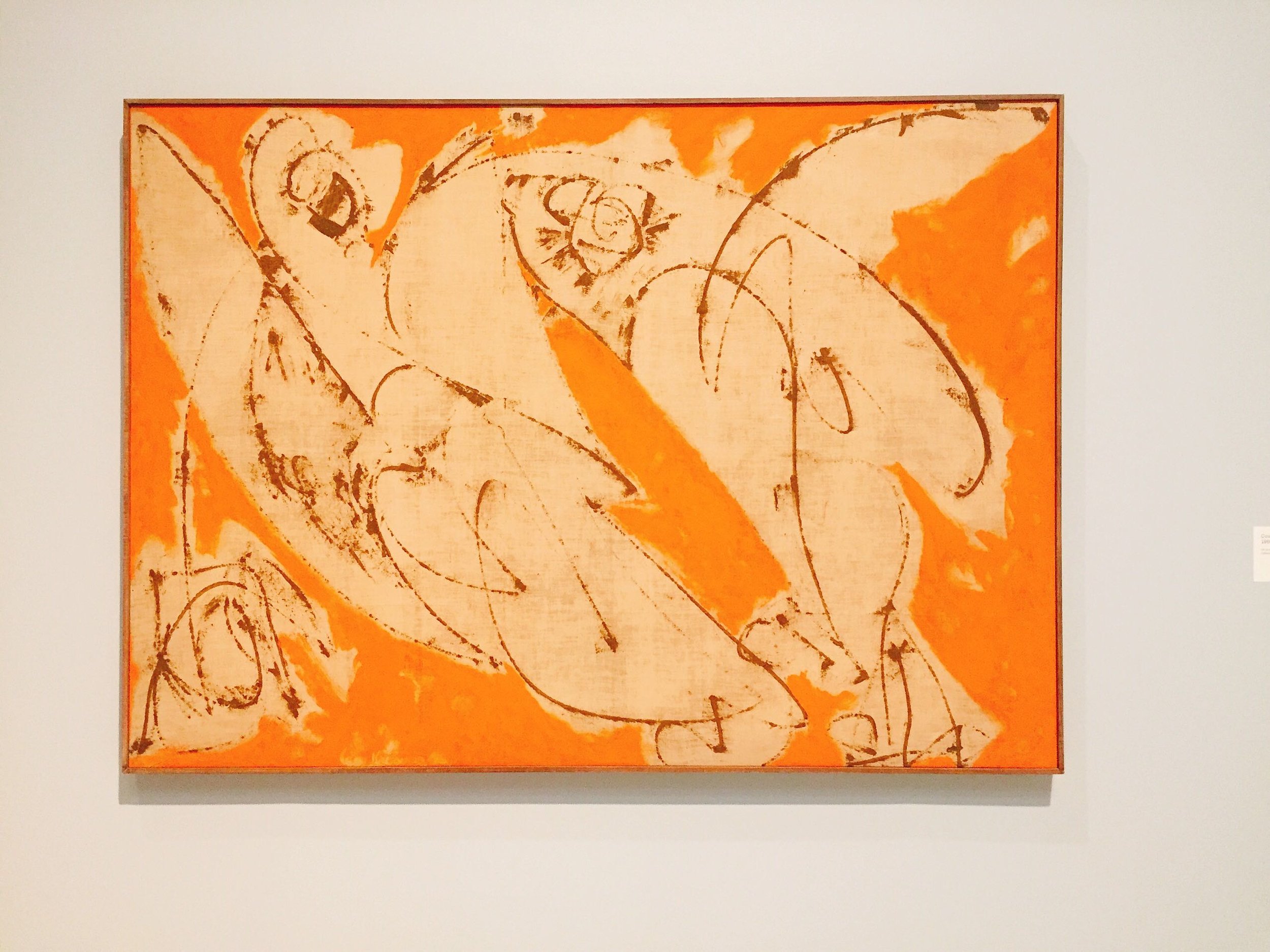Lee Krasner: Living Colour

‘I was a woman, Jewish, a widow, a damn good painter, thank you, and a little too independent…’
Lee Krasner (also known to be Jackson Pollock’s wife) was born in Brooklyn, New York in 1908. Krasner’s father, had emigrated to the United States from a small village in Russia three years earlier to escape brutal anti-Jewish violence. Krasner’s fascination with modernism led her to Hans Hofmann, the German artist and teacher. Advocating a dramatically different approach to the Academy, Hofmann encouraged Krasner to radically deconstruct the model’s body in her drawings. Krasner immersed herself in Hofmann’s teachings on Cubism and the pair developed a mutual respect for each other’s practice.
“This is so good, you would not know it was painted by a woman!”
While Krasner was gaining recognition and respect within the New York art scene, but was frequently overshadowed by surrounding male artists – notably by her partner, and later husband, the artist Jackson Pollock. In 1956, Pollock began a public affair with the painter Ruth Kligman, and his alcoholism had worsened significantly. Invited by friends to visit them in Europe, Krasner took the opportunity for a break and left Pollock behind in East Hampton. While in France, Krasner received a telephone call from Clement Greenberg to inform her that Pollock had crashed his car and died. At the age of 47, Krasner found herself a widow.
And she was, Mrs Pollock.
It was horrifying for her, as she’d have to take the art world by herself. A year after Pollock’s death, Krasner decided to move her studio into the barn in Springs. Although it must have been a space loaded with painful memories, it was also the largest working area on the property which finally allowed her to work on a bigger scale. Due to her insomnia, she started working at night and due to the lack of natural light, Krasner refused to work with colour and instead used a purposefully limited palette of raw and burnt umber on canvas - that enters her ‘Umber’ period, known as the ‘Night Journeys’.
In 1960, after overcoming her insomnia, Krasner allowed colour to burst back into her painting. A riot of dissonant hues emerged – fuschia pink, hot orange, Kelly green – her favourite colours, in what Krasner called her ‘Primary Series’.
It was an incredible show and as the curator puts it, this was a wonderful sequel/ending to their earlier show ‘Modern Couples’, where the Barbican team brought together works of a handful of female artist - wife, lovers to world renown artists as Picasso, Pollock, that were overshadowed by their male counterparts, Lee Krasner was definitely one of them. It’s interesting how as you walk through the show, started by seeing Jackson Pollock’s influence everywhere, less of it as you approach each stage of her life and finally Lee Krasner - just her, no Mrs Pollock, no anguish paint drippings - her and her colors. I’m so glad to be introduced to Krasner’s works, a softer but confident approach to Abstract Expressionism, which I find much more pleasant to Pollock’s.
Lee Krasner: Living Colour celebrates the work and life of Lee Krasner, a pioneer of Abstract Expressionism. The first major presentation of her work in Europe for more than 50 years, this exhibition tells the story of a formidable artist, whose importance has too often been eclipsed by her marriage to Jackson Pollock. The exhibition takes place from 30 May–1 September 2019 in the Barbican Art Gallery.




